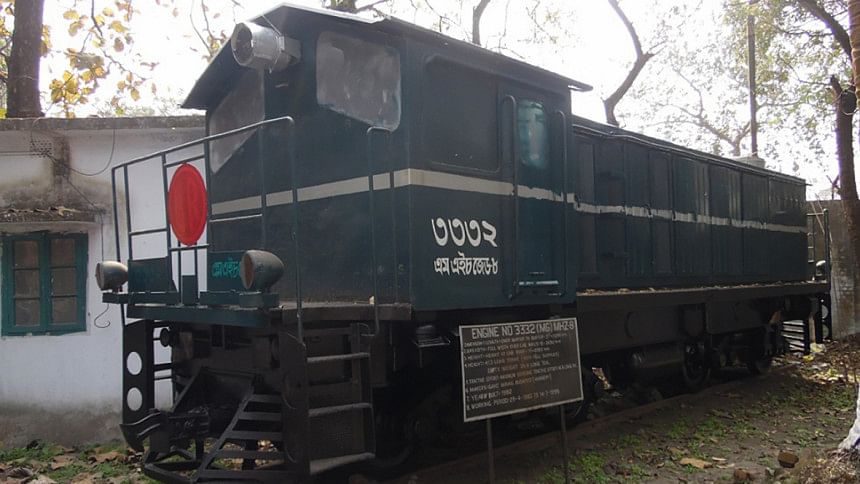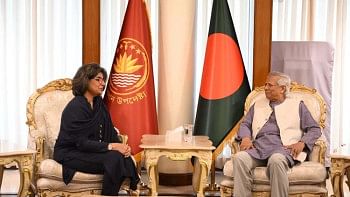On the track of history: Century-old locomotives in Saidpur

On November 15, 1862, a steam locomotive travelled from Ranaghat Railway Junction (now in West Bengal, India) to Jagoti Railway Station in Kushtia (now in Bangladesh) to introduce rail communication in the undivided Bengal.
The locomotive, powered by steam generated by boiling water with burning coal, pulled the train slowly and carefully, amazing the local people as they never saw such a giant vehicle before.
Since then, over the next 158 years, rail communication in the region has gone through various modifications, changes and enhancements, to leave behind the past and move forward to be on the verge of introducing electric trains.
Saidpur Railway Workshop in Nilphamari, the largest in the country established in 1870, has been displaying rail engines from the bygone era at its exhibition yard on its premises, in a bid to preserve the glorious history of railway.
"It is like a railway museum. Thanks to Saidpur Railway Workshop authority for presenting its glorious past to the new generation," said Jahangir Alam Sarker, a local historian.
A small narrow gauge steam locomotive, a broad gauge steam locomotive and an old metre gauge diesel engine, which are no longer in service, draw attraction of enthusiastic visitors.
While visiting the yard recently, this correspondent found that each engine is displayed at the workshop's yard along with a signboard that provides information on the locomotive, duration of service, and route of operation.

The small narrow gauge steam locomotive, 18 feet 8 inches in length and 7 feet 6 inches wide, was built by WG Bagnall Ltd in Stafford of England in 1936. It operated in Khulna-Bagerhat railway section between 1936 and 1969.
The broad gauge steam engine, which has an enormous length of 53 feet 10 inches, was built in 1921 jointly by Sir WG Armstrong With Worth & Co, Vulcan Foundry Ltd and Kerr Stuart & Co, both English companies, and operated in the railway's Pakshi division between 1921 and 1936.
The metre gauge diesel engine is 38 feet long and was built by Hungarian company Ganz-Mávag in 1982. It ran from 1983 to 1999.
"Students often come here for study tours, while foreigners also come to see the old rail engines," said Sheikh Hasanuzzaman, manager (works) at the workshop.
"Recently, an Englishman was overwhelmed as his forefathers were involved in making one of the locomotives in England," he added.
"The present, modern state of railway operation has been gradually achieved over the last 158 years and we would like to keep our glorious past alive by displaying the rail engines from different ages at the workshop's exhibition yard," said Zoydul Islam, divisional superintendent at Saidpur Railway Workshop.





Comments